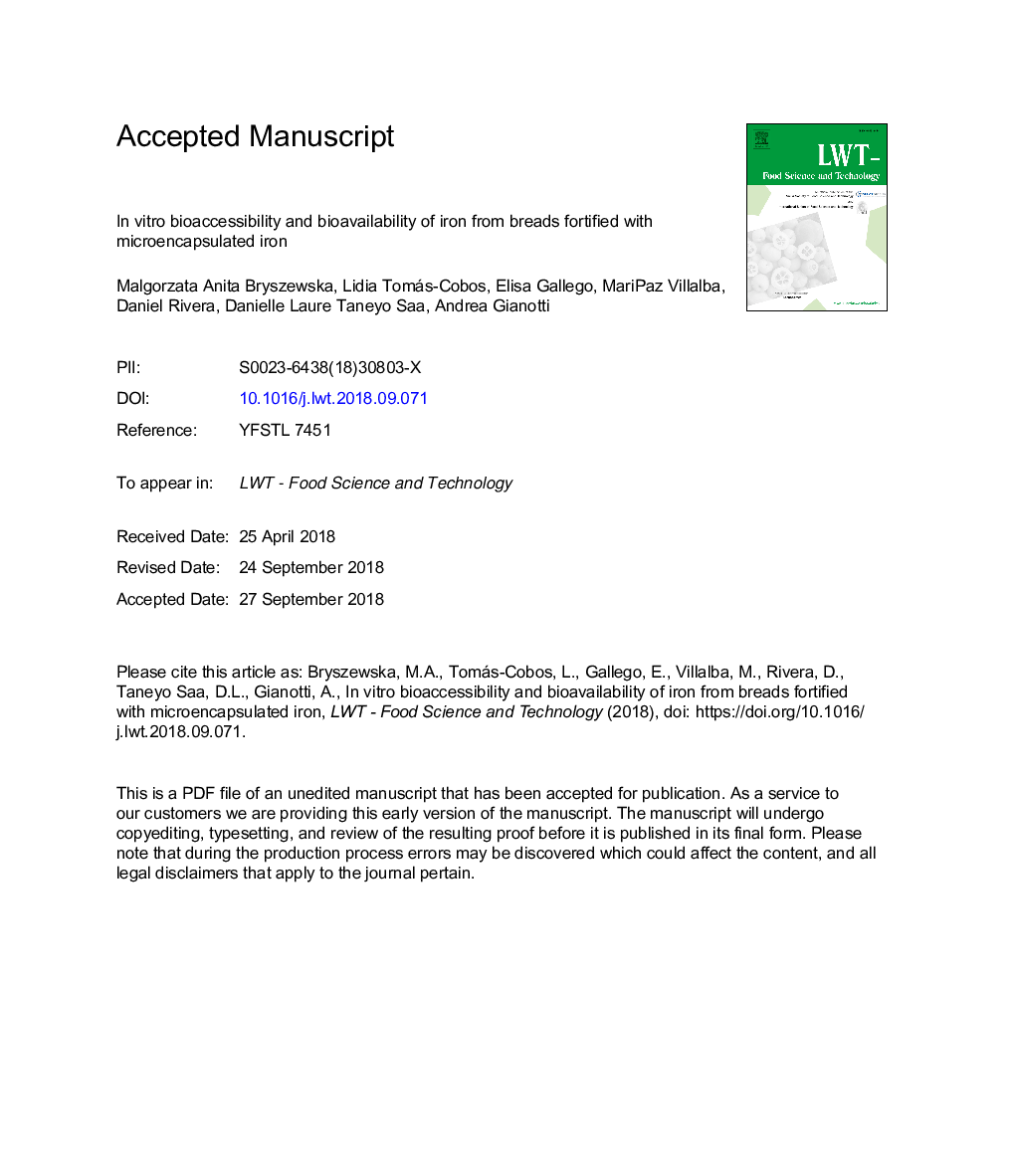| Article ID | Journal | Published Year | Pages | File Type |
|---|---|---|---|---|
| 11024896 | LWT - Food Science and Technology | 2019 | 25 Pages |
Abstract
Iron deficiency is the most prevalent mineral deficiency in the world. Food fortification offers an alternative to standard oral iron therapy, which often causes unpleasant side effects. In this study, bread was fortified with either ferrous sulphate or ferrous fumarate. To prevent undesired organoleptic changes in colour, odour and taste, iron compounds were introduced in the form of microcapsules. Eight types of bread were prepared using conventional fermentation or sourdough and fortified with one of four types of microcapsule. The in vitro bioaccessibility and bioavailability of the iron were determined using the human epithelial adenocarcinoma cell line Caco-2, preceded by digestion in a dynamic gastrointestinal digester, which mimics the upper gastrointestinal tract of an adult human. The bioaccessibility of the iron after digestion of the fortified breads varied from 41.45 to 99.31%. The iron transport efficiency varied widely, from 1.16 to 13.78%. Generally, both bioaccessibility and transport efficiency were higher in the samples of breads prepared by conventional fermentation. The mRNA expression of DMT1 and IREG1, cellular iron transporters which serve as molecular markers of iron movement across the intestinal border, was not statistically significant.
Keywords
Related Topics
Life Sciences
Agricultural and Biological Sciences
Food Science
Authors
Malgorzata Anita Bryszewska, Lidia Tomás-Cobos, Elisa Gallego, MariPaz Villalba, Daniel Rivera, Danielle Laure Taneyo Saa, Andrea Gianotti,
